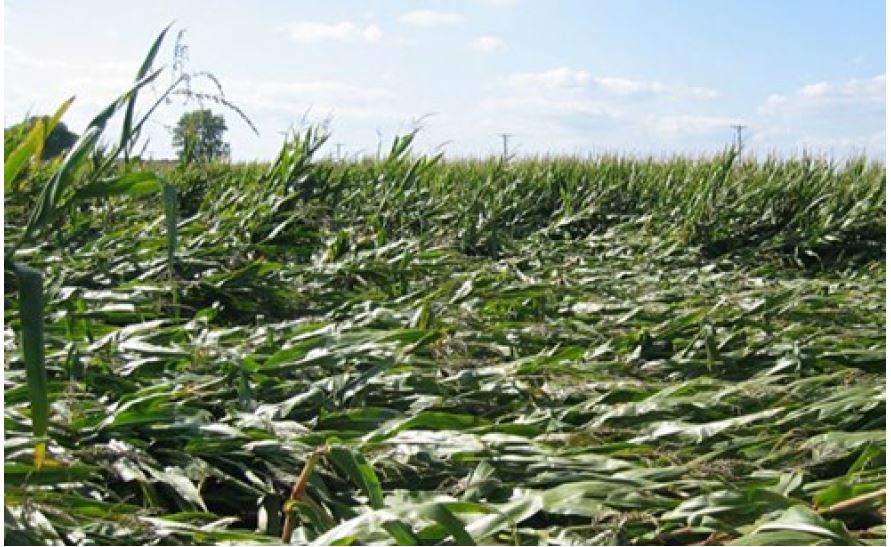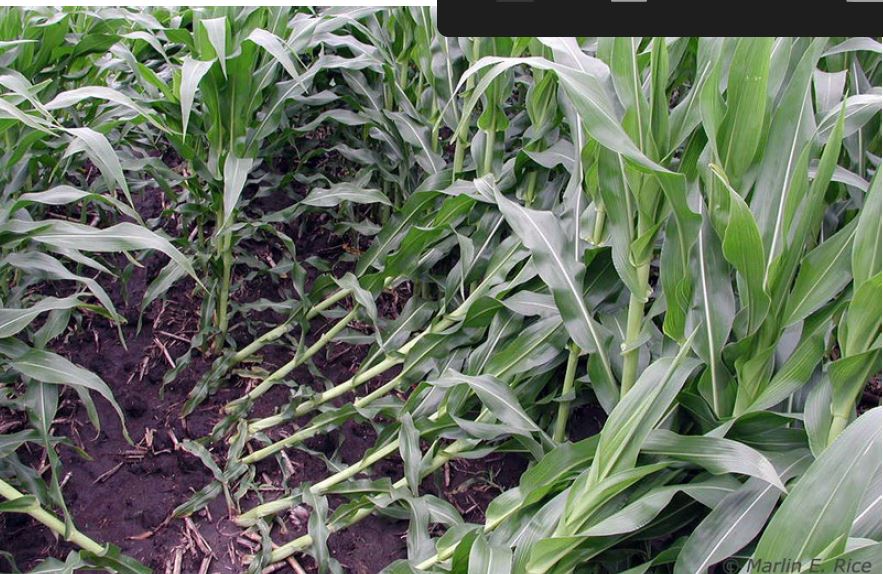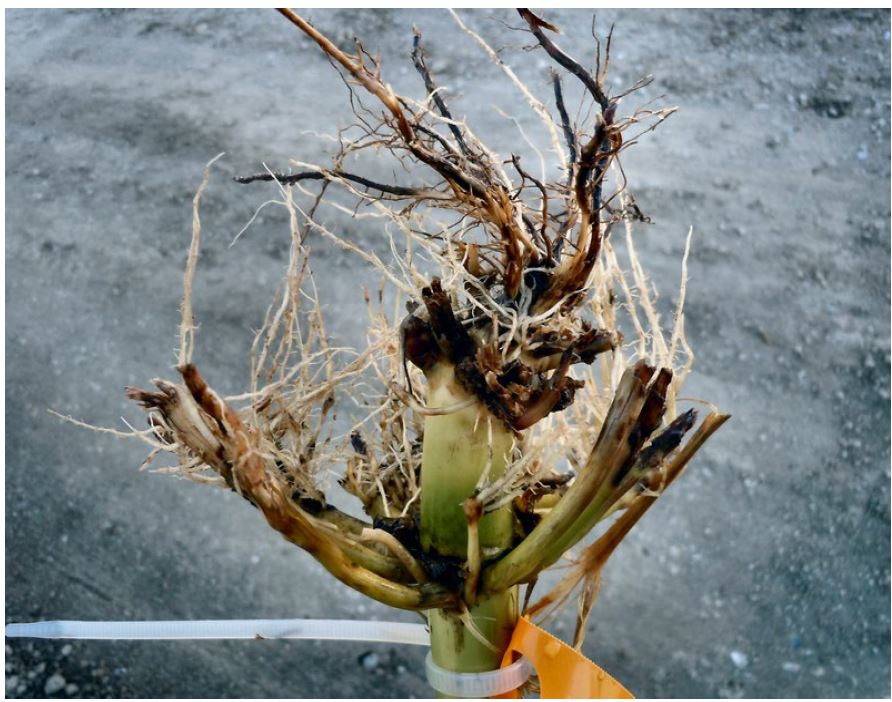- A 3-yr field study by Ohio State University researchers evaluated effects of root lodging on corn development and grain yield (Lindsey et al., 2021).
- Simulated wind lodging treatments were applied by pushing plants over by hand immediately after irrigation or heavy precipitation events.
- Recovery from lodging was highly dependent on crop growth stage, with plants that lodged during vegetative growth (V10 and V13) able to recover much more than plants that lodged after tasseling (VT-R1 and R3).
- Yield loss resulting from lodging was greatest at VT-R1, stemming from reduced kernel number, poor pollination, and increased barren plants (Figure 1).
- Yield loss from lodging at R3 was mostly attributable to reduced kernel weight, and partially to reduced kernel number.
- Ears close to the ground at VT-R1 and R3 increased incidence of vivipary which could also impact grain marketability.
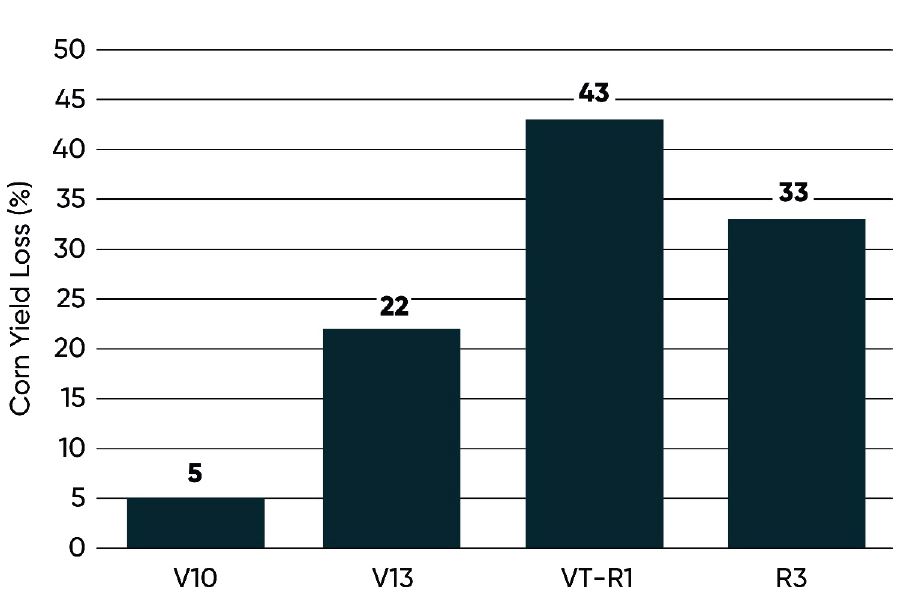
Figure 1 - Yield loss associated with root lodging at different corn devel-opmentstages in a 3-yr Ohio State University study (Lindsey et al., 2021).
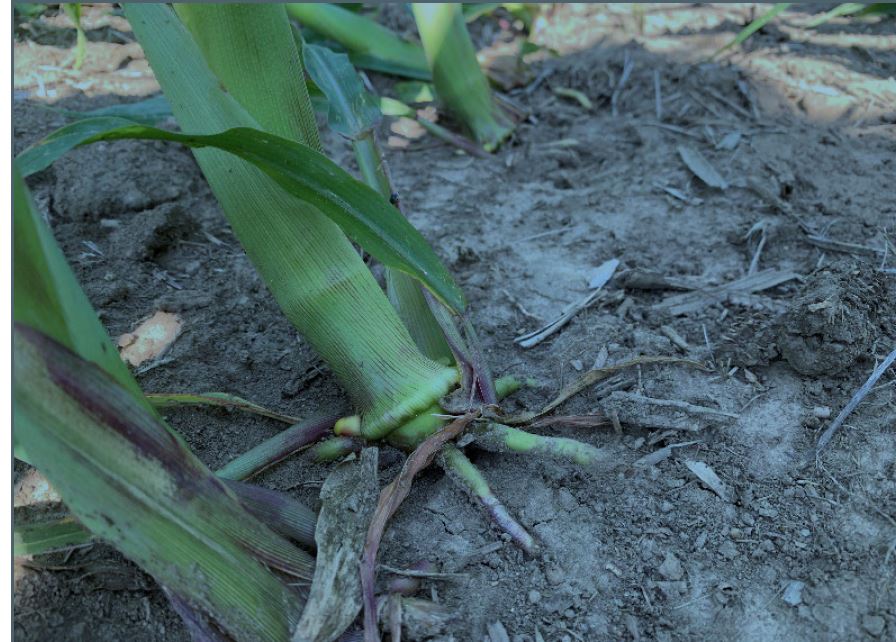
Brace roots are important for stabilizing the plant under high winds and recovery after lodging has occurred. Lodging risk is increased when high winds occur before brace roots have fully developed or brace root development has been inhibited by dry soil conditions.








